|
I've been using the SWANS
RT2H-A planar tweeter several timew, first in the AT-SW
construction and later for clients and in some non-published
constructions. Hence this article on a simple tweak to improve
performance of the tweeter.
To get and idea about what
a planar tweeter is, I suggest downloading the data sheet found above. A
grain of salt doesn't hurt, but basically the data sheet tells what it's
all about.
Planars do sound different from conventional domes, primarily due to
differences in dispersion in the vertical plane. Whether this is a good or bad
thing depends on what we are going to used it for. SWANS claims this to
be a positive feature as it reduce early reflections from floor and
ceiling, but I don't think this necessarily makes a great
tweeter.
What's good is the enourmous membrane area compared to standard domes.
Large membrane area equals low excursion compared to the 1" dome and low
excursion usually means low distortion.
Good planar tweeters have the quality of electrostatic speakers, smooth
and non-aggressive treble performance within its power handling
capability. The use of neodymium magnets now allows seriously efficient
units compared to those made with ceramic magnets back in the Eighties.
The RT2H-A tweeter here can easily be implemented in 95-97 dB systems.
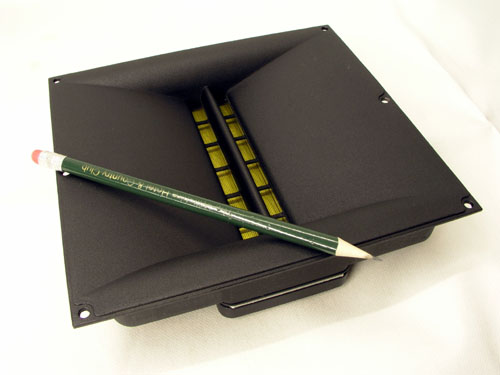 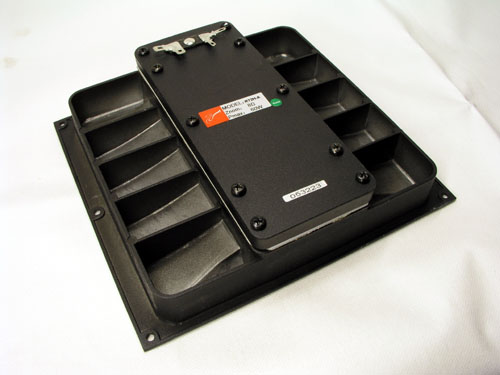
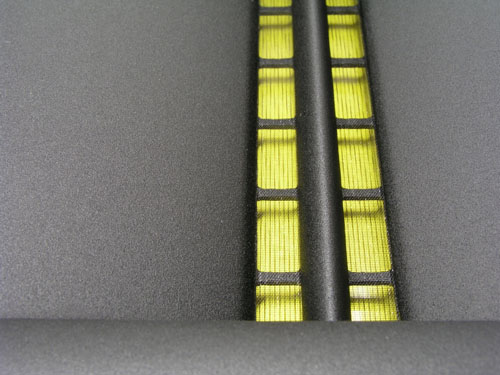 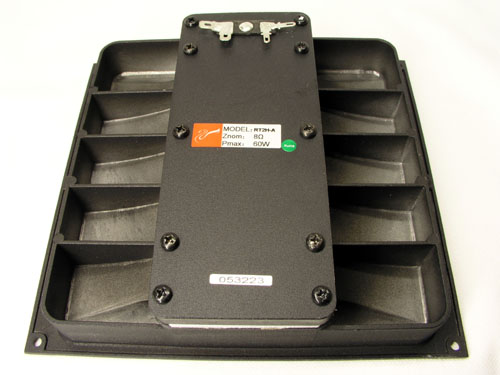
I've had mails stating the
RT2H-A is ugly! Well, taste can't be argued, but I value sound higher
than appearance.
Measurements
BACK
TO TOP
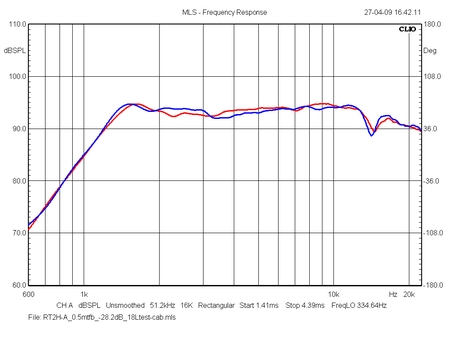 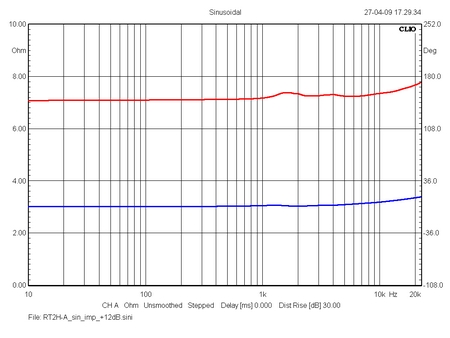
Left: SPL/2.8V, 1 meter, unit 1 and 2.
Right: Impedance (red) and electrical phase (blue).
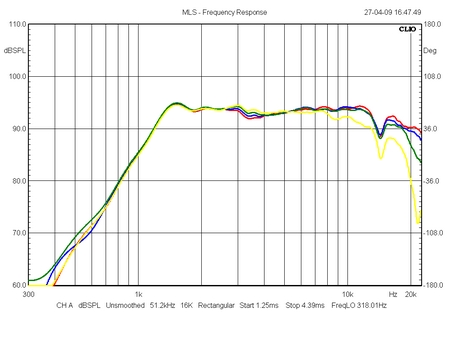 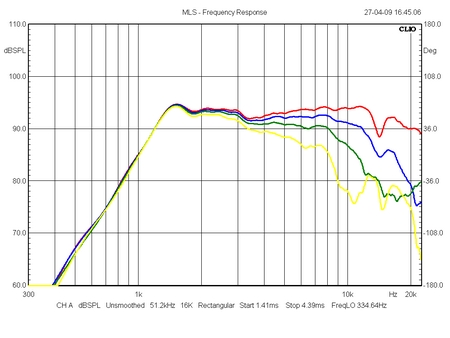
Left: Horizontal dispersion @ 0, 10, 20 and 30 deg.
Right: Vertical dispersion @ 0, 5, 10 and 15 deg.
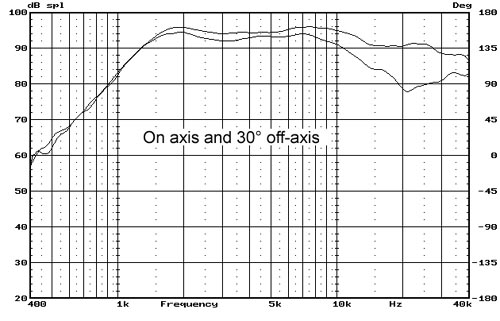
No dip at 15kHz from SWANS' measurements, possibly due to quick sine
wave sweep.
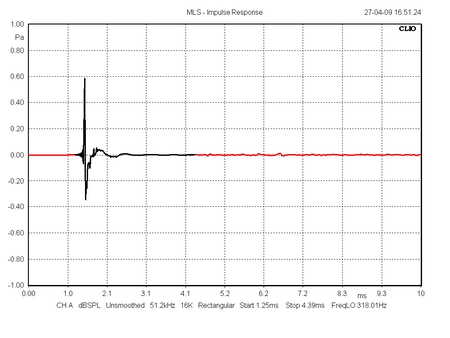 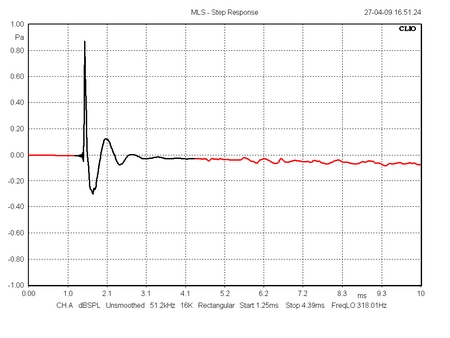
Left: Impulse response. Right: Step response.
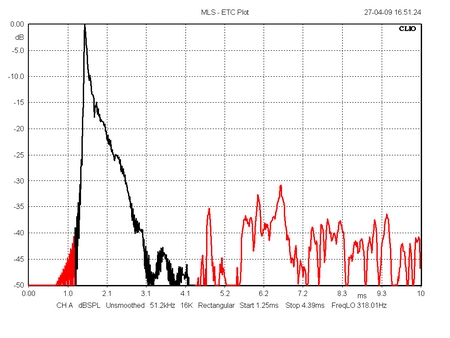 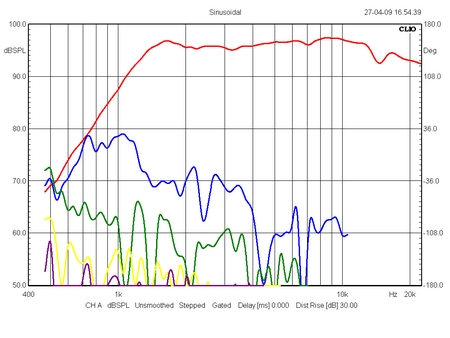
Left: ETC plot. Very little stored energy.
Right: Distortion @ ½ meter, 96 dB equals 90 dB @ 1 meter.
Dist. rise 15 dB, not 30 dB as on graph. Blue = 2nd harm., green = 3rd
harm. Excellent performance down to 1.5 kHz.
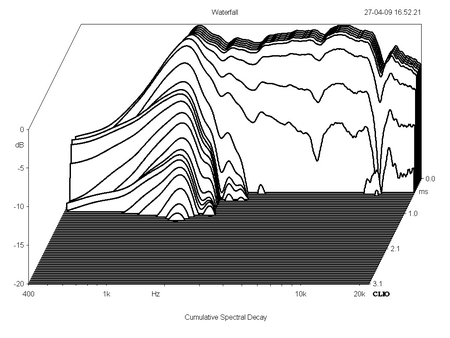 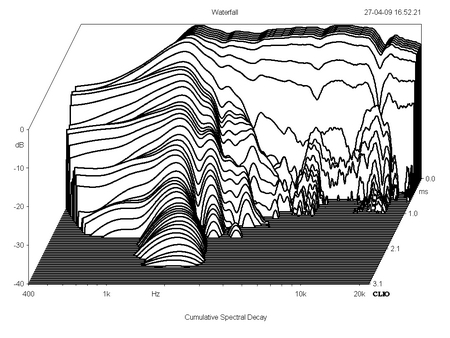
Left: CSD @ 20 dB scaling. Right: CSD @ 40 dB scaling. This is indeed a
very clean sounding tweeter.
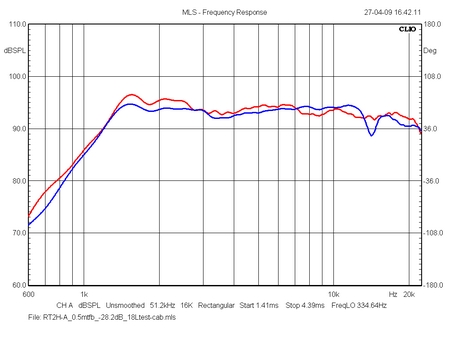
The dip at
14-15 kHz was a bit annoying, thus time to disassemble the
unit and take a closer look. Tweaking the damping material
renders the red curve. Voila! flat response up to above 20
kHz.
Now, taking the RT2H-A apart is tricky. The extremely strong
neodynium magnets will pull the diaphragm support in all
directions and there's a serious risk of damage, so be warned.
|
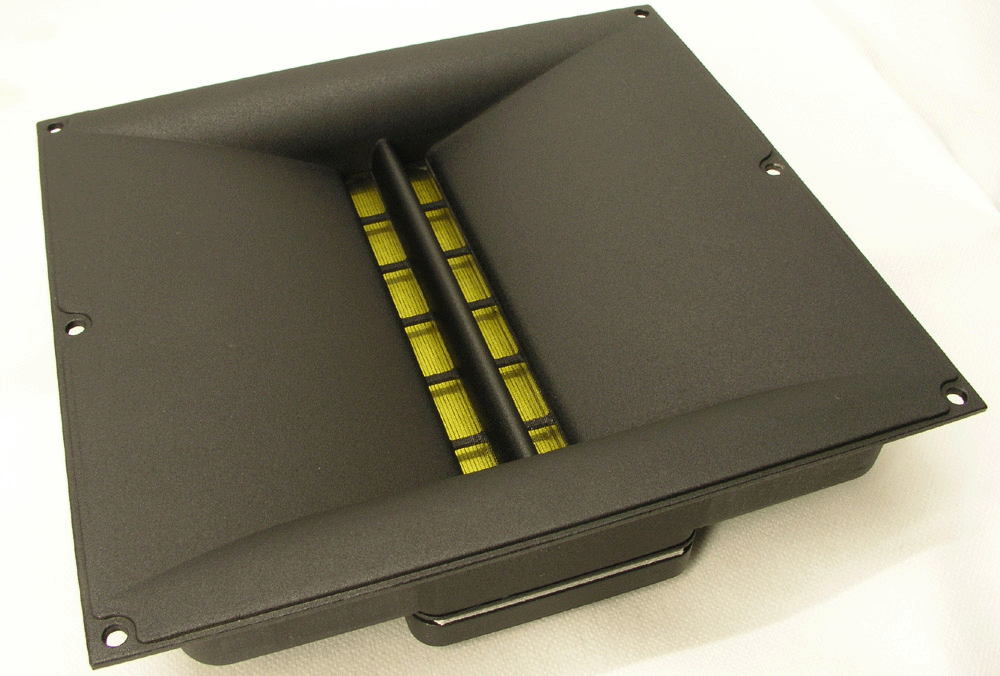
Nice metal waveguide that doesn't need to be countersunk.
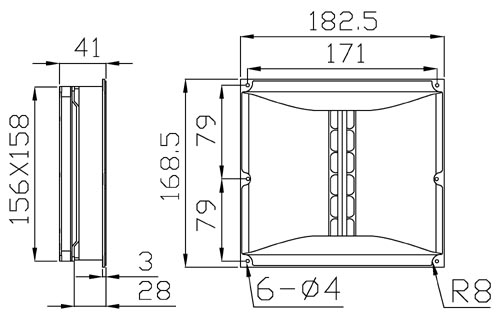
SWANS
RT2H-A planar disassembly
BACK
TO TOP
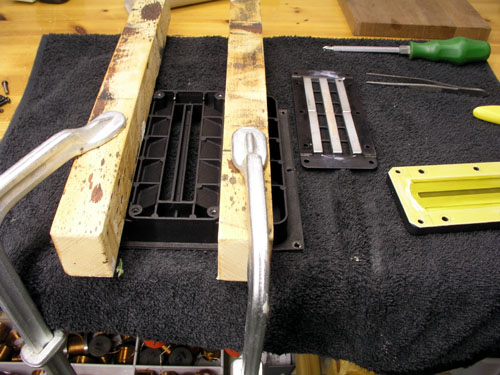 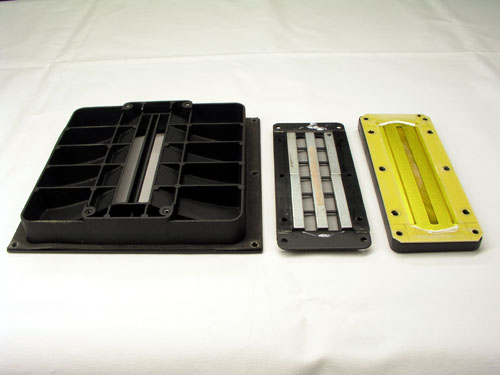
Taking apart
the SWANS driver takes special precautions due to the strong neodymium magnets, thus a rig is needed to
lift of the rear plate and fragile diaphragm. In front we have
3 lines of magnets and on the rear panel one magnet in the
middle, which - by the way - looks like a ceramic magnet.
|
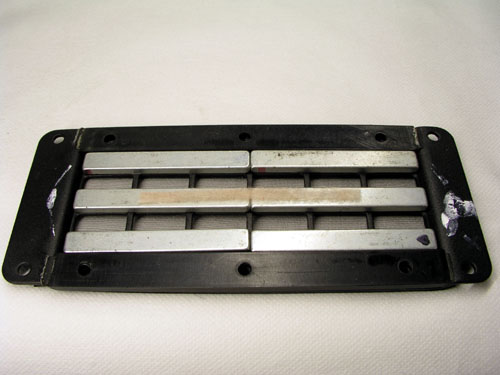 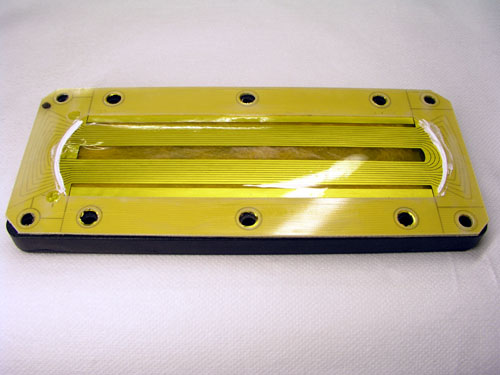
Between the
magnet in the middle and the membrane, a thin line of damping
material is placed, which will touch the diphragm once
installed. On the whole of the rear side of the diphragm
another very light-weight sheet of damping material is placed.
The diphragm kind of floats on this bed of lightly suspended
fiber material.
To this day I have
bought 4 units and the first of the two units had the 15 kHz dip
as seen above. The next two units had the same fiber material
behind the diaphragm but did not display any 15 kHz dip.
For the sake of uniformity, all units had the rear fiber
material removed.
|
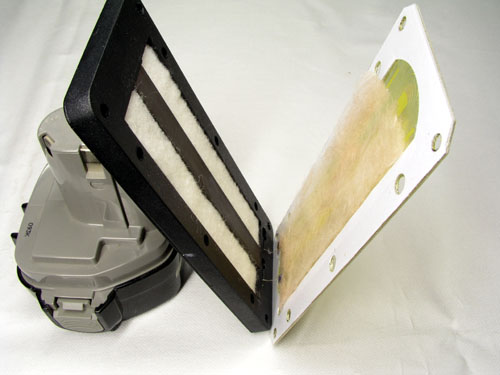 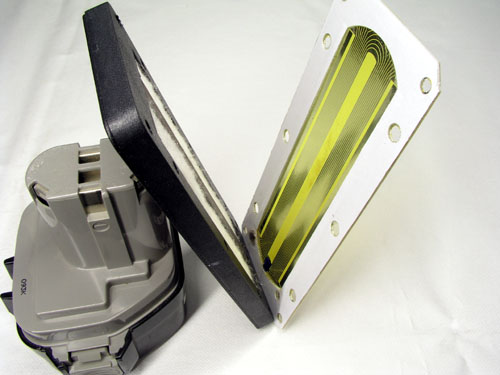
| Upper left: Fiber material on
rear of diphragm. At bottom you can see the two thin wires
from the diphragm going to the terminals. Upper right: Fiber
material removed with a soft brush. Do not use any tools here
having iron parts! They'll be sucked in by the strong magnets! |
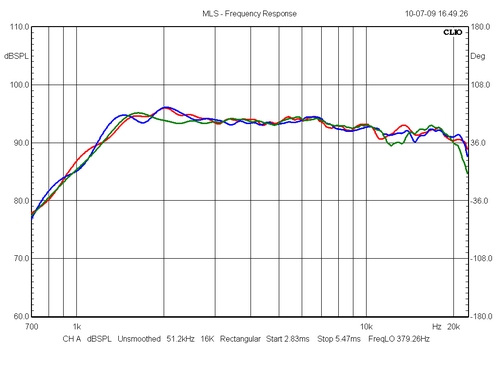
Three modded units. It doesn't get better than this.
These are easy to pair, actually don't need pairing.
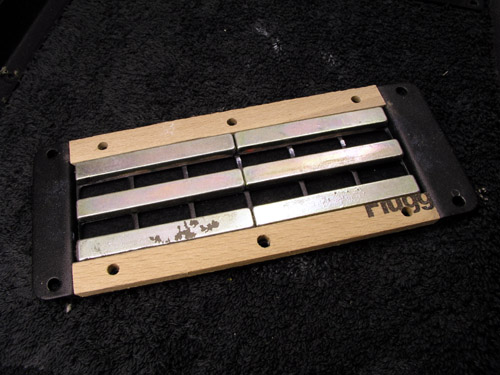
One tweeter (older
stock) had foam bars besides the magnets and fastening
the diaphragm with the six screws proved difficult due to the frame
bending.
Thus, the foam bars were replaced with these wooden bars and everything
went back to normal. Beware of old models, see below:
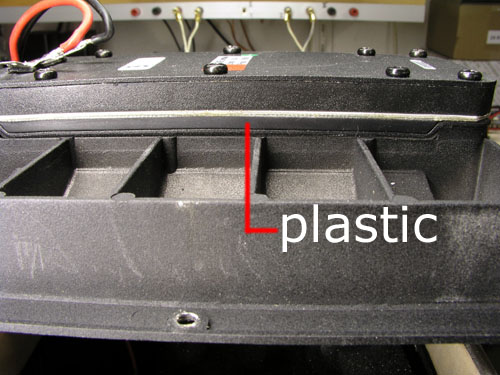
The support bar here must be made from plastic.
NEW-OLD
MODELS
BACK
TO TOP
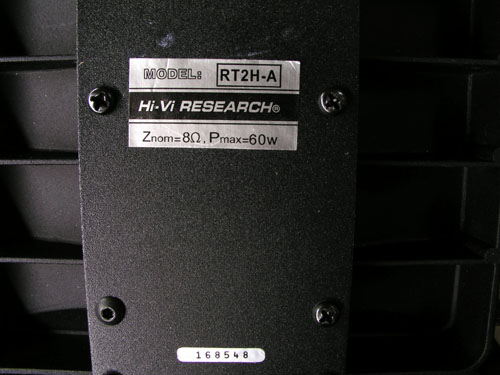 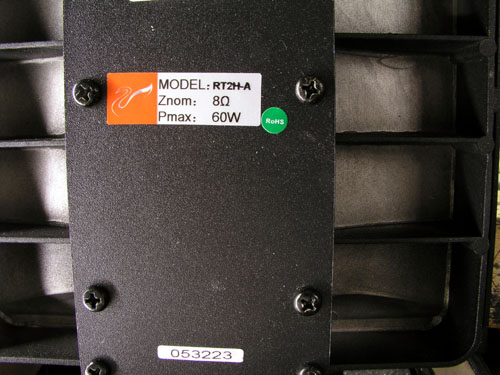
Left: Old stock. Right: New stock.
|




























